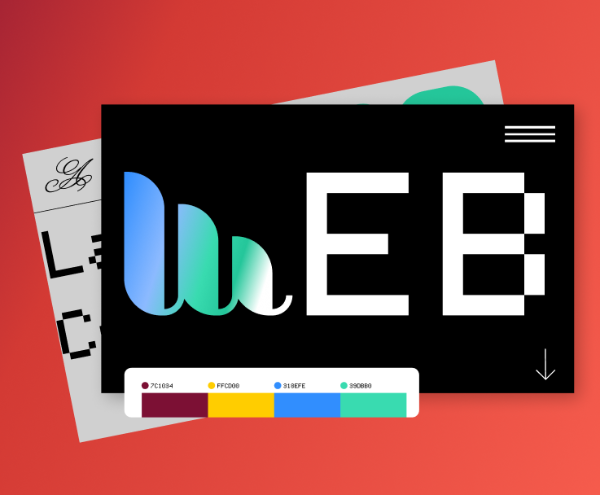How to Master Template for Website Design
Quick Template for Website Design Guide
Template for Website Design
Web application development is crucial in today’s digital age, as businesses strive to provide their customers with a seamless online experience. With the rise of e-commerce and the increasing demand for online services, the need for well-designed and efficient web applications has never been greater.

Template for Website Design Explained
Template for Website Design
1. MemberPress
MemberPress is a popular WordPress plugin that is designed specifically for creating membership sites. It offers all the tools you need to build, manage, and monetize your membership site effectively. With MemberPress, you can easily restrict access to content, create subscription plans, and accept payments online.
MemberPress also offers robust reporting and analytics features, allowing you to track your membership site’s performance and make data-driven decisions. The plugin integrates with popular payment gateways like PayPal and Stripe, making it easy to accept payments from your members.
In addition, MemberPress offers powerful customization options, allowing you to create a unique and personalized membership site that reflects your brand. Overall, MemberPress is a great choice for anyone looking to create a professional and scalable membership site.
2. Kajabi
Kajabi is an all-in-one platform that allows you to create, market, and sell online courses and membership sites. It offers a range of features, including website building tools, course creation tools, and marketing automation capabilities.
With Kajabi, you can easily create a membership site with customizable membership levels, drip content, and secure payment processing. The platform also offers detailed analytics and reporting, allowing you to track your membership site’s performance and make adjustments as needed.
Kajabi’s website builder is user-friendly and intuitive, making it easy for anyone to create a professional-looking membership site without any technical skills. The platform also offers excellent customer support, with a team of experts available to help you with any questions or issues you may have.
Overall, Kajabi is an excellent choice for anyone looking to create a comprehensive and feature-rich membership site that is easy to manage and scale.
3. Teachable
Teachable is a popular online course platform that also offers membership site capabilities. With Teachable, you can easily create and customize membership sites with personalized branding, content restrictions, and payment processing.
Teachable’s website builder is simple to use and offers a range of templates and customization options, allowing you to create a professional-looking membership site in no time. The platform also offers detailed analytics and reporting, allowing you to track your membership site’s performance and make data-driven decisions.
Teachable integrates with popular payment gateways like PayPal and Stripe, making it easy to accept payments from your members. The platform also offers marketing tools like email marketing and affiliate tracking, allowing you to promote and grow your membership site effectively.
Overall, Teachable is a great choice for anyone looking to create a membership site with online courses, offering a range of features and customization options to suit your needs.
4. Squarespace
Squarespace is a popular website builder that offers a range of features and templates for creating membership sites. With Squarespace, you can easily create and customize membership sites with secure payment processing, content restrictions, and analytics tracking.
Squarespace’s website builder is user-friendly and intuitive, making it easy for anyone to create a professional-looking membership site without any technical skills. The platform also offers excellent customer support, with a team of experts available to help you with any questions or issues you may have.
Squarespace integrates with popular payment gateways like PayPal and Stripe, making it easy to accept payments from your members. The platform also offers marketing tools like email marketing and social media integration, allowing you to promote and grow your membership site effectively.
Overall, Squarespace is a great choice for anyone looking to create a visually stunning membership site with robust features and customization options.
Building an online store that is beast-free can be a great way to attract eco-conscious consumers and differentiate yourself from the competition. There are a number of website builders that cater to this growing market, making it easier than ever to create a cruelty-free online store. In this article, we will take a look at some of the best beast-free website builders available, as well as some tips for building a successful online store that caters to ethical shoppers.
One of the most popular beast-free website builders is Shopify. Shopify is a user-friendly platform that allows you to create a professional-looking online store with ease. The platform offers a number of features and templates that are specifically designed for eco-friendly and cruelty-free businesses, making it a great choice for those looking to build a beast-free online store.
Another great option for building a beast-free online store is Big Cartel. Big Cartel is a smaller, indie-focused platform that is well-suited for artists, makers, and small businesses. The platform offers a range of customizable templates and features that are perfect for creating an ethical online store.
For those looking for a more budget-friendly option, Ecwid is a great choice. Ecwid is a versatile platform that can be easily integrated into your existing website or social media pages, making it a great option for small businesses and startups. The platform also offers a number of features that are specifically designed for eco-friendly businesses, making it a great choice for those looking to build a beast-free online store on a budget.
When building a beast-free online store, it is important to consider the types of products you will be selling. Look for suppliers that offer cruelty-free and vegan products, and make sure to thoroughly research the ingredients in each product to ensure that they are truly animal-friendly. This information can be included in your product descriptions and on your website to help build trust with your customers.
It is also important to consider your branding and marketing efforts when building a beast-free online store. Make sure that your website and social media pages clearly communicate your commitment to cruelty-free and ethical products. Consider partnering with animal rights organizations or influencers in the vegan and eco-friendly space to help spread the word about your brand.

Template for Website Design Resources
Template for Website Design
In today’s digital age, having a visually appealing and user-friendly website is crucial for the success of any business. A well-designed website can help attract new customers, build credibility, and increase conversion rates. However, designing a website is not as simple as it may seem. It requires a strategic and systematic approach to ensure that the final product meets the needs and expectations of both the business and its target audience. In this article, we will discuss the website design process in detail, outlining the key steps involved in creating a successful website.
Step 1: Define the Purpose and Goals
The first step in the website design process is to clearly define the purpose and goals of the website. This involves identifying the target audience, understanding their needs and preferences, and determining the desired outcomes for the website. For example, is the website meant to generate leads, drive sales, provide information, or showcase products and services? By having a clear understanding of the purpose and goals of the website, you can better tailor the design and content to meet these objectives.
Step 2: Conduct Research
Once the purpose and goals of the website have been defined, the next step is to conduct research. This involves analyzing the competition, researching industry trends, and gathering insights into the preferences and behaviors of the target audience. By conducting thorough research, you can gain a better understanding of what works and what doesn’t in your industry, helping you make informed design decisions.
Step 3: Create a Wireframe
After conducting research, the next step in the website design process is to create a wireframe. A wireframe is a visual representation of the layout and structure of the website, showing the placement of various elements such as navigation menus, headers, footers, and content sections. Creating a wireframe allows you to plan the overall design and functionality of the website before moving on to the visual design phase.
Step 4: Design the Visual Elements
Once the wireframe has been finalized, the next step is to design the visual elements of the website. This involves creating a visually appealing and consistent design that reflects the brand identity and resonates with the target audience. Elements such as color scheme, typography, imagery, and layout are carefully considered to create a cohesive and attractive design that conveys the desired message and engages users.
Step 5: Develop the Website
After the visual design has been approved, the next step is to develop the website. This involves coding the design into a functioning website using HTML, CSS, and other programming languages. During the development phase, the website is tested for functionality, responsiveness, and compatibility across different devices and browsers to ensure a seamless user experience.
Step 6: Test and Optimize
Once the website has been developed, it is essential to test and optimize its performance. This involves conducting usability tests to identify any usability issues, testing load times to ensure fast page speeds, and optimizing the website for search engines to improve visibility and accessibility. By testing and optimizing the website, you can ensure that it meets the needs and expectations of users, leading to better engagement and conversions.
Step 7: Launch and Monitor
The final step in the website design process is to launch the website and monitor its performance. This involves deploying the website to a live server, promoting it to the target audience, and tracking key metrics such as traffic, engagement, and conversions. By monitoring the performance of the website, you can identify areas for improvement and make informed decisions to optimize its effectiveness over time.


